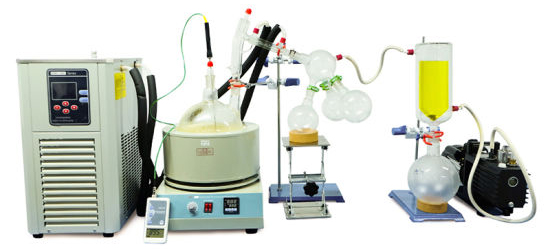News
Principle of distillation of short-path distillation equipment
Today, we talk about molecular distillation technology that has special significance in the separation of heat sensitive substances. In general, the use of distillation techniques for the separation of liquid materials is a very common method. The distillation or rectification process is a common process, but for many natural products the active substances are very easily destroyed during the heating process. In this case, the general method is to increase the vacuum degree of the system by vacuuming, and then the boiling point of all substances is naturally lowered. In general, we are dealing with heat sensitive substances in this way. However, if the active substance is too sensitive to temperature, then only the extraction method can be employed. First, the active material is extracted with an extractant, and then the extractant is separated. However, low boiling extractants are generally toxic and solvent residues are a problem.
Then there will be short-path distillation technology, here is a brief introduction to the principle. First, let's take a look at the gas-liquid interface. From a microscopic point of view, our gas-liquid interface is not calm, and the molecules in the liquid will briefly jump out of the interface, and a small part of the kinetic energy of these molecules at the jump interface can be large. Diffusion into the gas phase, mostly due to collision with other molecules during the diffusion process, loses energy and then returns to the liquid phase. Thus, a diffusion layer is formed near the gas-liquid interface, and the molecular density of this layer is between the gas phase and the liquid phase. The thickness of the diffusion layer is related to the degree of vacuum and temperature. If the vacuum is continuously increased, the frequency at which the molecules are struck will become lower and lower, so that the thickness of the diffusion layer will increase continuously, and the proportion of diffusion into the gas phase will be greatly increased. . If the liquidus temperature is high, the molecular energy is large and the thickness of the diffusion layer is also increased. Finally, at the boiling point, all liquid molecules at the gas-liquid interface have the ability to diffuse into the gas phase. At this point, it can be considered that the thickness of the diffusion layer can reach the entire gas phase.
It can be seen from the above process that whether it is vacuum distillation or atmospheric distillation, it is an equilibrium process, and the distillation process must be completed at the boiling point corresponding to the pressure.
Send Us Message
Your message was sent successfully.
Sorry!Something Went Wrong.

